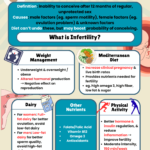“Eating fruits can cause blood sugar to increase”
“吃水果会导致血糖升高”
“I cannot eat fruits, I have diabetes mellitus”
“我不能吃水果,我患有糖尿病”
Although we know fruits and vegetables are good for us, people with diabetes are often told they can’t eat fruits because they are too sweet or contain sugar. The truth is, people with diabetes should take fruits in their diet. Fruits are important source of fiber, vitamins and minerals. Then why are all the myths saying that fruits are not for people with diabetes? This is because managing diabetes has to do with managing your blood glucose. The concern has been that because fruits contain sugar, and sugar can cause your blood glucose to rise.
虽然我们都知道水果和蔬菜对我们有益,但是糖尿病患者经常被告知不能吃水果,因为它们太甜或含糖。事实是,糖尿病患者应该在他们的饮食中加些水果。水果是纤维、维他命及矿物质的重要来源。那么,为什么会有那么多迷思说水果不适合糖尿病患者呢?这是因为管理糖尿病与控制血糖有关。水果含有糖分,而糖分会导致血糖升高。
However, the key point in managing diabetes is carbohydrate counting. People with diabetes mellitus should consult their doctor or dietitian about their carbohydrate budget. One serving of fruit contain 15 grams of carbohydrate. The serving size depends on carbohydrate content of the fruit. All fruits are good for our health as long as you consume them within your carbohydrate budget.
然而,管理糖尿病的关键在于碳水化合物计数。糖尿病患者应该向他们的医生或饮食治疗师咨询他们日常所需的碳水化合物预算。一份水果含有15克的碳水化合物。份量取决于水果的碳水化合物含量。只要您摄取适量的碳水化合物,所有水果都有益于我们的健康。
“Okay, I can eat fruits in peace now. But wait, they said that watermelon, banana and grapes are no-no for diabetic patient”
“好的,我现在可以安心地吃水果了。但等等,他们说糖尿病患者不可以吃西瓜、香蕉和葡萄。”
This misconception is typical among diabetes patient. Have you ever heard of glycemic index (GI)? Glycemic index is a system that ranks foods based on how much and how quickly they raise blood sugar levels. The scores run from 0 to 100 with the following classifications:
这种误解在糖尿病患者中是典型的。您听过升糖指数(GI)吗?升糖指数是一种根据食物升高血糖水平的速度,对食物进行排名的系统。分数从0到100,如下:
- Low GI:55 or less.
低GI:55或以下
- Medium GI:56–69.
中等GI:56至69
- High GI:70–100.
高GI:70至100
Different fruits have different GI value. However, the same food; for example banana, can have different value of GI. Factors such as ripeness, processing, acidity, amount of soluble fiber and food combination can alter GI value of food. Again, the key point in managing blood sugar is carbohydrate quantity. The serving size is the main point here.
不同的水果有不同的GI值。然而,同样的食物或水果,如香蕉,可以有不同的GI值。成熟度、加工、酸度、可溶性纤维量及食物组合等因素可改变食物的GI值。再一次证明,管理血糖的关键在于碳水化合物含量。份量也是关键之一。
How about other foods such as rice, bread, noodles? They have GI value too?
其它食物如米饭、面包和面类,它们都有GI值吗?
Yes, of course. Carbohydrate foods have their own GI value. Some types of fiber can lower food’s glycemic index, but some do not. Insoluble fiber, the type found in wheat, has little effect on glycemic index, so whole wheat bread has a glycemic index similar to that of white bread. Basically, low GI value of food represents high content of soluble fiber. Foods high in soluble fiber such as oats, barley, and legumes (dried beans and lentils) have low glycemic index values.
当然有。碳水化合物食品都有它自己的GI值。某些类型的纤维可以降低食物的GI值,但有些则不能。小麦中的不溶性纤维对升糖指数影响不大。因此,全麦面包的升糖指数与白面包相似。基本上,低GI值食物代表高含量的可溶性纤维。可溶性纤维含量高的食物包括燕麦、大麦及豆类(干豆和扁豆)的升糖指数较低。
Diets based on low-GI foods are thought to be particularly good for people with type 2 diabetes. This is because low-GI foods are absorbed more slowly and cause a more gradual rise in blood sugar levels, rather than large spikes. Research shows that practising low GI diet can help to reduce post-prandial blood sugar and reduce hsCRP and HbA1c by 0.14% to 0.5%. However, GI of foods is not recommended as a primary strategy for dietary management of diabetes mellitus. Monitoring total carbohydrate intake remains a key strategy in achieving glycemic control. Yet, GI may be helpful for you in fine-tuning your diet plan.
基于低GI值食物的饮食被认为对二型糖尿病患者特别有益。这是因为低GI值食物吸收速度较慢,导致血糖水平逐步升高,而不是大幅度上升。研究显示,低GI值饮食可以帮助减少餐后血糖水平,继而降低hsCRP和HbA1c值到0.14% 至0.5%。但是,食物中的GI值不建议作为糖尿病饮食管理的主要策略。监测总碳水化合物摄取量仍然是控制血糖的关键策略。然而,GI值可能对您的微调饮食计划有所帮助。
How much fruits and can I eat if I have diabetes?
如果我患有糖尿病,我可以吃多少水果?
Recommended intake of fruits for adults is 2-3 servings daily. It is important to be sure that your fruits intake is counted as part of your carbohydrate sources and it is within your carbohydrate budget. One serving of fruit should contain about 15g of carbohydrates. Please tune to the photo attached for the serving size. You can consult a dietitian to discuss about your carbohydrate budget to control your blood sugar. You also can check the GI value of food here http://www.glycemicindex.com/.
建议成人每天摄取2-3份水果。您必须确保您的水果摄取量被计为碳水化合物来源的一部分,并且在您的碳水化合物预算范围内。一份水果应含有约15克的碳水化合物。您可以参考以上附加照片中的份量大小。您可以咨询饮食治疗师关于您的碳水化合物预算,以控制您的血糖。您也可以浏览http://www.glycemicindex.com/ 以查询食品的GI值。






